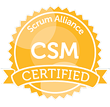This week I spoke about Management 3.0 to the Agile community in Israel. It is amazing how this great community was anxious to deepen their Agile experience.
What was even more amazing was the evolution of the understanding of management’s role in an Agile implementation. And it was clearly seen during this session, while listening to advanced companies discuss their Agile journey, that Management 3.0’s mindset and practices are so relevant and needed today to make their implementations effective and lasting.
Why are Management 3.0’s principles so relevant?
In order to understand the conditions that stimulate an Agile mindset, we
need a different way to create value in a volatile, uncertain, complex and ambiguous (VUCA) world.
We approach that using Agile principles and practices. But, here is the problem, we encountered: How can we implement frameworks, such as Scrum or Kanban?
We’ve been focusing on the different roles, but we forgot to pay attention to the required change from the management approach in order to maintain a positive culture.
So how can we do that?
- Have you ever been in a daily where everyone reports to the Scrum Master (SM) or team leader (TL)?
- Is the SM/TL the ones solving the impediments?
- During planning, does the TL assign user stories and tasks to team members, and determine the final estimations?
- Have you ever been in a quiet retrospective where team members say that they are repeating the same issues or that there is nothing to improve?
Why does this happen?
When we approach management as if it’s only an asset for managers and when managers keep the command & control approach within an Agile implementation, it creates a foundation of ambiguity, lack of trust and dis-empowerment of teams that should be self-organized.
Remember what happened to quality? It’s been an asset for testers, for the QA department and while implementing Agile we came to understand that quality is one of the best assets. We built quality into the teams. We created a culture for quality.
The same should go with management. We should create a culture where management becomes the responsibility of everyone.
If we want to create self-organizing teams, we should explore our approach to management and our organizational structure to enhance communication and flow of work.
This is where Management 3.0 comes in and provides great clarity on the principles and practices that should assist.
It provides valuable and practical exercises that we can use in order to lead to cultural change including:
- Energizing people towards common goals
- Empowering teams to achieve those goals
- Aligning organizational constraints, what we value and how we want to behave to achieve these goals
- Developing team competencies to enable them to create this great value
- Growing and enhancing communication to create healthy organizations
- Creating an environment of continuous improvement
As a foundation for this cultural change we need to understand that by doing so we can enable an ecosystem that supports growth.
So by focusing on managing the system and not the people, we enable people to grow their competencies, provide them with autonomy and purpose, and help improve worker happiness that will create
great business value.
*Originally posted on Management 3.0 blog:
https://management30.com/blog/your-organization-is-becoming-agile-dont-forget-about-the-culture/






